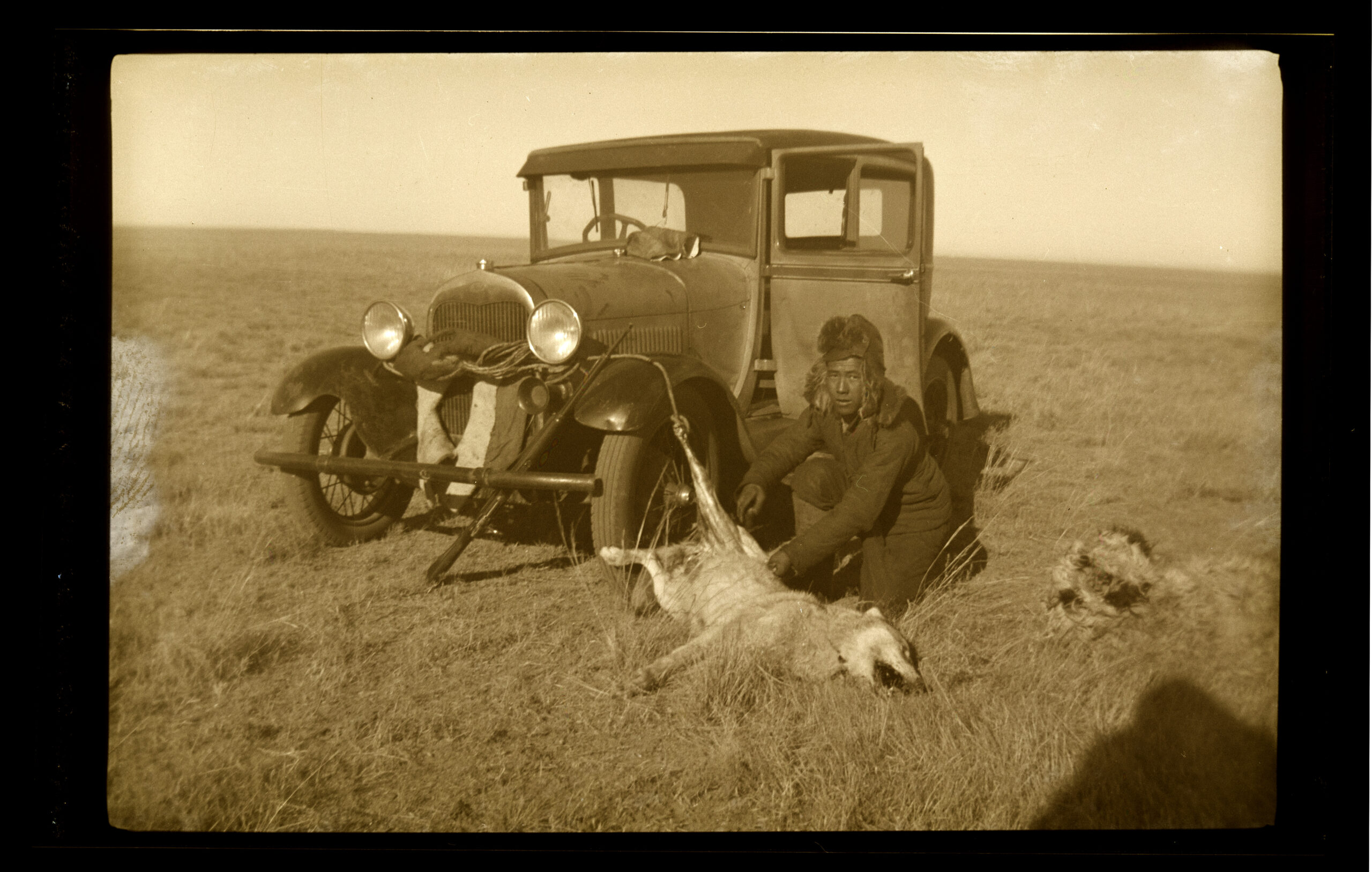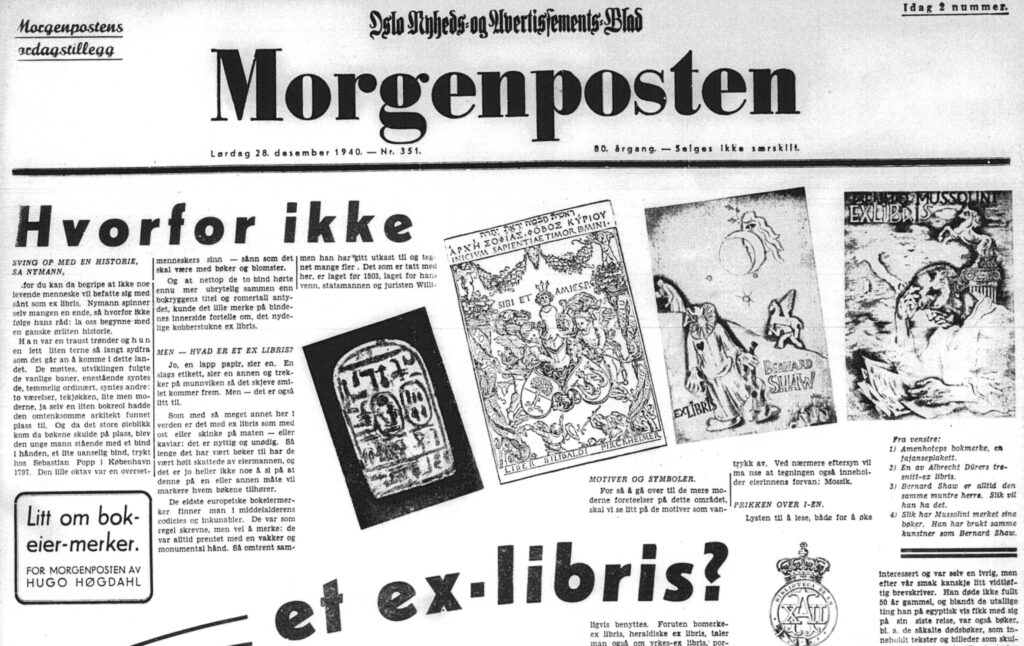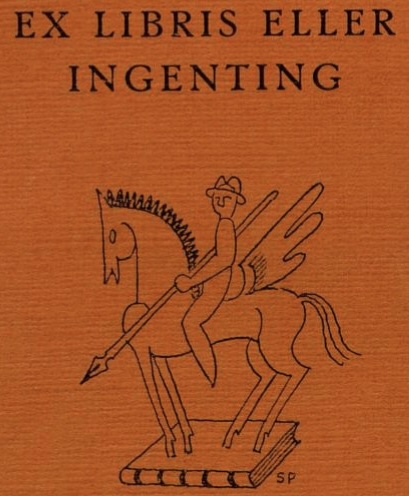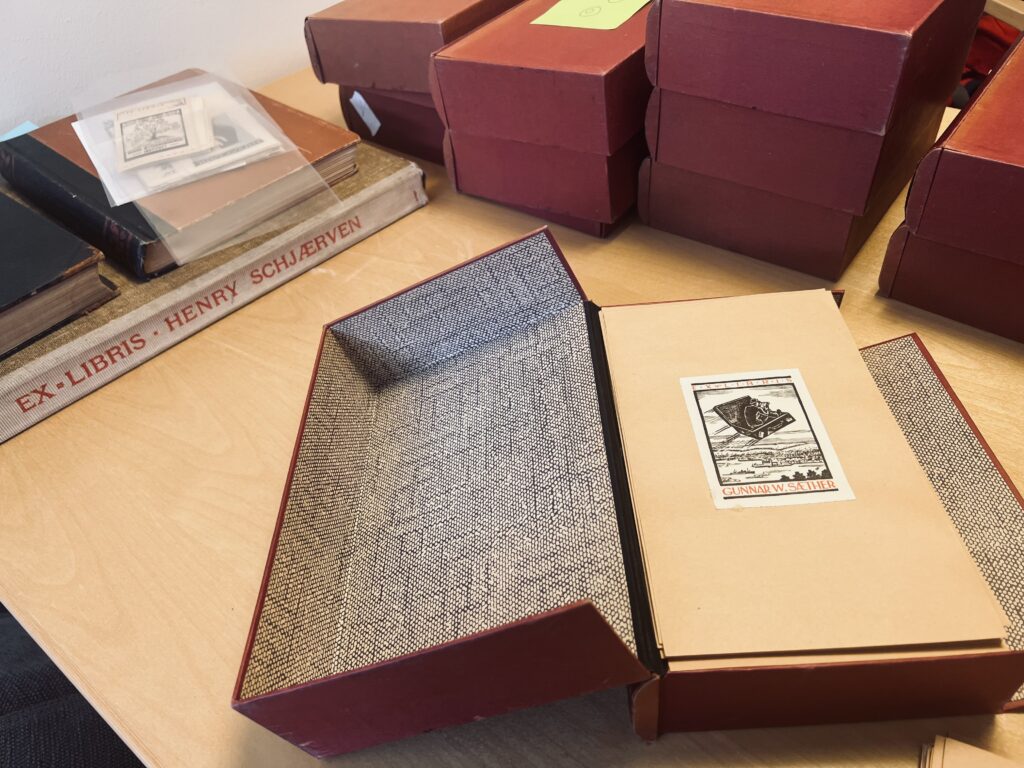I call myself priviliged. I get to work around creative, knowledgeable, enthusiastic and wonderfully nerdy people here at the University Library. About a year ago, my colleague Øystein Kleiven asked me to assist him with Optical Character Recognition (OCR) for a typewritten manuscript he was about to digitise and make available on the cultural heritage platform Alvin. The manuscript, a thick bunch of typewritten A4 pages with a couple of marks and corrections in pencil and ink, belonged to the tobacco salesman, adventurer, and self-taught anthropologist Oscar Mamen, a Norwegian from the Ås municipality south of Oslo who went to Mongolia in 1911 and stayed for about 30 years in Mongolia, China, and Manchuria to then leave Asia and settle in Tanzania where he died in 1955.
The accession of the typewritten Manuscript is worthy of a detective story, but shall not be retold in its entirety here. Only so much: in 2017, several thousand photographs and heaps of diaries, letters, and other papers – the manuscript being one of them – by and from Mamen were donated to the Museum of Cultural History in Oslo. They lay dormant for a while until the photographs were made the focal point of a doctoral thesis by anthropologist Maria Kartveit and created quite a stir in Mongolia when they were released to the public in Vol. 10 of “Mongolia and Mongols” and subsequently on social and news media in Mongolia.
When I was approached, I did not know anything about Mamen; nor about the collection at the Museum of Cultural History and had only basic knowledge about modern day Mongolia. I did, however, know about what can and cannot be achieved with common OCR tools and I had experience with handwritten text recognition (HTR), especially with the user friendly platform Transkribus. I offered my colleague, who was disappointed and discouraged by the low quality of the OCR he had achieved with Adobe Acrobat, to test a suitable HTR-model on Transkribus. I used a model created by the National Archives of Norway, trained on interrogation logs from the German Occupation time (1940-1945) and it performed quite well! However, due to health issues, I had to pause my work on the manuscript for more than half a year.
In early January this year, I re-visited the manuscript with the intention of creating a better HTR-model and thus improving the quality of the output. To my surprise, the National Archives had removed their model from the Transkribus public models due to copyright and ethical reasons, so I was left with only a couple of pages transcribed and even fewer checked and proof-read. I decided to go all in and do the proofreading myself, given that the manuscript was fairly easy to read and the Norwegian used by Mamen not too difficult to understand. I quickly got hooked on the content though: the manuscript, titled “Atter Et År i Østen” (Yet Another Year in the East), turned out to be a travelogue of Mamen’s last journey to and stay in Inner Mongolia. The writing was both funny and captivating, Mamen writing with style and wit and acute observations about the life of a salesman, entrepreneur, and collector of cultural artefacts in the city of Kalgan and the on the vast northern plains of Inner Mongolia.
On 212 pages I got to read about a journey on boat and train to the far East, a “coming back” to a place the author held dearly and meeting old friends along the road, all from Berlin to Moscow to Ulan-Ude and finally in Kalgan. His arrival coincides with the Japanese attack on China (known as Operation Chahar or Operation Nankow) and while most non-Asian foreigners fled the region, Mamen stayed during the siege and occupation of Kalgan. Much later than planned, he gets to travel from Kalgan towards the north, where he lodges at an old friend’s compound to go hunting wolves, foxes, and other fur bearing animals in an effort to establish a fur trading business. At the same time, he collects archeological artefacts from the region for the Museum of Cultural Heritage in Oslo, documenting their location and retrieval in detail with photographs and drawings and extensive notes. He contrasts starkly the peaceful Mongolia with the war-ridden and in his opinion dysfunctional China, and reminisces about his live abroad and the feeling of being home there, on the great Mongolian plains, and not in Oslo, where he lived in a hotel for the past years. The manuscript ends with Mamen packing his trunks to set sail towards a different part of the globe, wistful and nostalgic about leaving Mongolia. As we know now, for good. He was never to return.
The manuscript is remarkably well preserved, given that it spent almost 80 years in trunks on different continents and would end up in a garage in Kolbotn, a small town just outside Oslo. Mamen typed clearly, the few errors and typos are deleted immediately with “xxx”. The typewriter he used did not have the Norwegian umlaut “å”, but an “ø” and “æ” type. Instead of expanding å to aa, Mamen added the o-superscript manually with pencil. He also used pencil to mark corrections. On few occasions, corrections, deletions and insertions are done with black ink; the same ink that was used to sign the manuscript upon finishing, on October 13th, 1938.
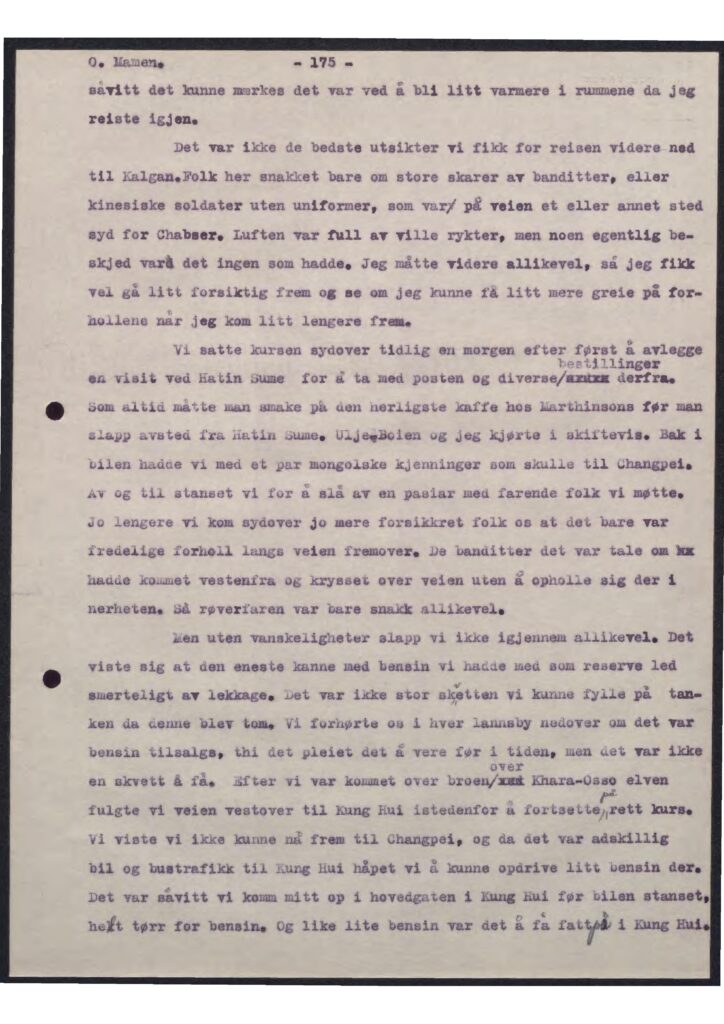
I decided to train an entirely new HTR-model to speed up the transcription of the manuscript. I wondered if we should aim to publish the manuscript, not only as a searchable PDF on the Alvin platform, but as a scholarly edition, preferably on the digital edition platform bokselskap.no. My colleague agreed and after getting the “ok” from the editor of bokselskap.no that we can publish our edition there, I set out to train the HTR-algorithm and tag the entire manuscript for later encoding with XML TEI.
With a character error rate (CER) below 1%, I managed to train an exceptionally well performing HTR-model that can sufficiently read the words that are x’d out or deleted with strikethrough as well as handle insertions of words and letters. I can also correctly transcribe the combination character å. I created a set of tags to annotate textual and layout features as well as basic semantic features, like names, dates, and references. The transcribed, proof-read, and annotated text can be exported from Transkribus into TEI conform XML and prepared for publication according to the style sheets used by bokselskap.no
Our ambitious plan is to have the manuscript of Yet Another Year in the East published on Bokselskap.no’s pages by the end of 2025, including a short biographical introduction (by Maria Kartveit), a section on the cultural and political context (by Øystein Kleiven) and the manuscript’s journey from Kalgan via East Africa to the archives oft he Museum of Cultural History in Oslo and its eventual preparation for a digital edition (by me).
The edition will also include the photographs Mamen took during the 1937-1938 journey. As an example, I have included a ‘snap’ taken by Mamen on one of his hunting trips with the car (a Ford) and his friend and car mechanic Ulje Boyen. The photo is taken on the 20th January 1938. It has been digitised from the negative in Mamen’s collection; the description is taken from Mamen’s typewritten list of negatives.

